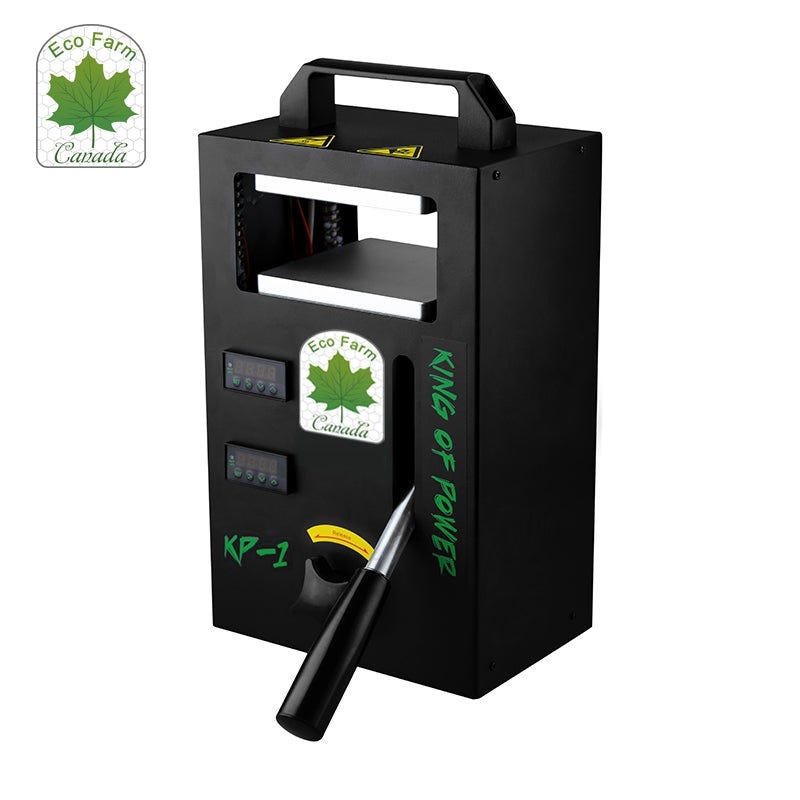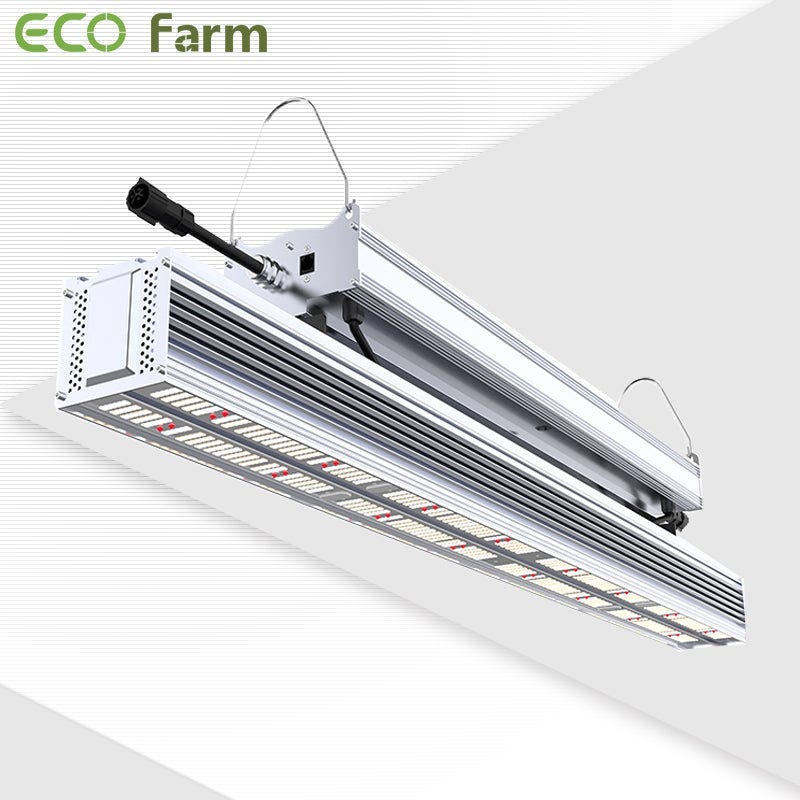未選択
-
[PR]
×
[PR]上記の広告は3ヶ月以上新規記事投稿のないブログに表示されています。新しい記事を書く事で広告が消えます。
-
Hyphotonflux SMART-670W Full Spectrum LED Grow Light VS VIVOSUN VS6450 Foldable Dimmable LED Grow Light
Contrary to popular belief, you don’t need a garden to grow plants. You can grow plants in your own home! Grow lights are an investment you should make to ensure your plants are growing optimally to provide you with delicious food. By mimicking natural sunlight, grow lights can help your plants grow fast and provide a bountiful harvest. Here are some of the best grow lights for you to choose from! We’ve rounded up the best grow lights to fit a variety of needs.
Why is it important to consider size grow lights?
The size of your light source helps determine the area of coverage it can adequately illuminate, which is critical to providing enough lighting energy for your garden.
Properly sized lights ensure plants get the light they need for photosynthesis, healthy growth and optimal yield.
However, if the light is too small for the intended planting area, the lighting coverage may not be sufficient. Conversely, if your lights are too large for the space, it may result in excessive light intensity, heat or energy consumption.
By choosing the right size, you can optimize your indoor growing environment. Thus, you can reduce energy waste and maintain a balanced and efficient ecosystem for your garden.
Hyphotonflux SMART-670W Full Spectrum LED Grow Light

Features:
Hyphotonflux LED Grow Light has a complete full spectrum of indoor plants from seeding to flowering, including white 6500k, deep red 660nm, uva 385nm, far red 730nm. SMART-670 built-in top compartment SAMSUNG & SEOUL diodes. It achieves an unrivaled efficacy of 3.03 μmol/J (UV off) and 2.69 μmol/J (UV on). The HYPHOTONFLUX SMART-670 is designed in a larger size (43.86"x43.66") to provide better PPFD coverage on 5'x5' flower grows and 6'x6' vegetable grows. Flexible 180°folding design, plug and play.
VIVOSUN VS6450 Foldable Dimmable LED Grow Light
Features:
This VIVOSUN LED grow light is equipped with Samsung 3030 & OSRAM 3535 LED bars, this LED light is more than 50% higher in PPFD compared to HID lamps, as well as having 37% lower power consumption regarding energy saving. The fixture can fold up to 180 degrees, making it compact and easy to install; It won’t take up much space, thus keeping your storage room tidy. With dimming options ranging from 40% to 100%, this LED grow light can satisfy a range of needs; Moreover, this fixture is compatible with a master controller, so you can adjust this LED light to accurate parameters in a convenient, quick way. This light offers great help for all stages of plant growth.
What to Look for in Grow Lights
Coverage: Make sure the grow lights you buy completely cover your plants. The size of the grow light and its brightness can affect coverage.
Personal requirements: The plant lights you buy must be suitable for your own needs-whether it is easy to move, easy to adjust, with a timer or dimmable, there are many different plant lights to choose from. Find the product that best suits you and your needs!
Value: There are many different price ranges to choose from, which often determines the quality of the product. However, the most expensive product isn’t always the best. Also, the cheapest isn’t always the worst. Examine the value of the product rather than the cost itself.
Wattage: Choose lights that provide the right wattage for your plants. If you are growing small plants or seedlings, low wattage lights may be sufficient. For larger plants, higher wattage lights may be required.Installation and maintenance of LED plant growth lights
When selecting and installing LED grow lights, it is important to have a clear understanding of the technology behind them. LED grow lights are designed to deliver energy in the wavelengths plants need for optimal growth while keeping heat production and power input low, making them an effective choice for growing indoor plants.It’s important to plan the grow lights you’ll be using before you buy — different models of LEDs have different light coverage and spectral outputs, so it’s important to understand your needs before you buy. Make sure that any product you purchase is UL-vetted or has other safety certification from a recognized product safety organization.
When installing LEDs in a tent setup, consider the angle at which light enters the tent, and the distance of objects from heat sources or reflective surfaces, which can negatively affect your light output. For larger areas such as large hydroponic systems, multiple LED strips may be required; all in different colors for maximum photosynthetic efficiency, distribution and coverage. As with any light installation project, wear gloves when handling LED grow lights and disconnect all connections before installing or removing any components. Finally, avoid getting water inside the housing of the LED light fixture — water can short out the electronics, causing malfunction or fire risk!
In addition to installing LED grow lights in your tent or another hydroponic system, you must also consider maintenance throughout their useful life. Regular daily cleaning is recommended — dust buildup on the reflector will reduce efficiency over time, so regular cleaning will help keep it running smoothly. Also, check your cooling system for potential blockages caused by dust buildup on fans or heatsinks: lack of airflow can quickly raise temperatures and severely damage your LEDs. You should also check your wiring and connections from time to time to make sure everything is safe; loose connections can overload wires, which can lead to dangerous situations like electrical fires and component failures.
Conclusion
If you find that your houseplants are becoming pale and straggly over time, this could be a sign that they are lacking light. Fortunately, adding grow lights is an easy fix for this problem. Vibrant new growth will appear quickly once your plants receive enough light.
In terms of versatility, longevity and energy efficiency, LED grow lights are the best solution for giving plants the light they need to thrive.
PR -
Spider Farmer G5000 480W Full Spectrum LED Grow Light VS ECO Farm SP-400 Samsung Foldable Dimmable Full Spectrum LED Grow Light
Most hobby growers now find themselves outfitting their home, garage or greenhouse with special equipment to help them give their plants everything they need to optimize growth and increase yields.
That’s why, we’re going to simplify it for you: Instead of cross-comparing different grow lights, we recommend that all growers — beginners and experts alike — go for LED grow lights. They are ideal for producing high-quality crops while being cost-effective.
How to measure light
Light intensity is the amount of light reaching a surface. The most commonly used unit of measurement for light intensity is the lux (lx). One lux is equivalent to the amount of light cast by a candle onto a square meter surface at a distance of one meter. It is one lumen of light per square meter.For plants, the ideal light intensity depends on the type of plant you are growing and its stage of growth.
For example, hydrodynamic vegetables like lettuce prefer uniform light with a wavelength of 400 to 700 micromolar intensities. While other plants, such as tomatoes, prefer full-spectrum light with a heavy red bias at 800–900 micromolar.
You can easily measure the intensity of light with a light meter. Most light meters have a sensor that measures the amount of light in a specific area and displays the result in lux (lx).
Spider Farmer G5000 480W Full Spectrum LED Grow Light
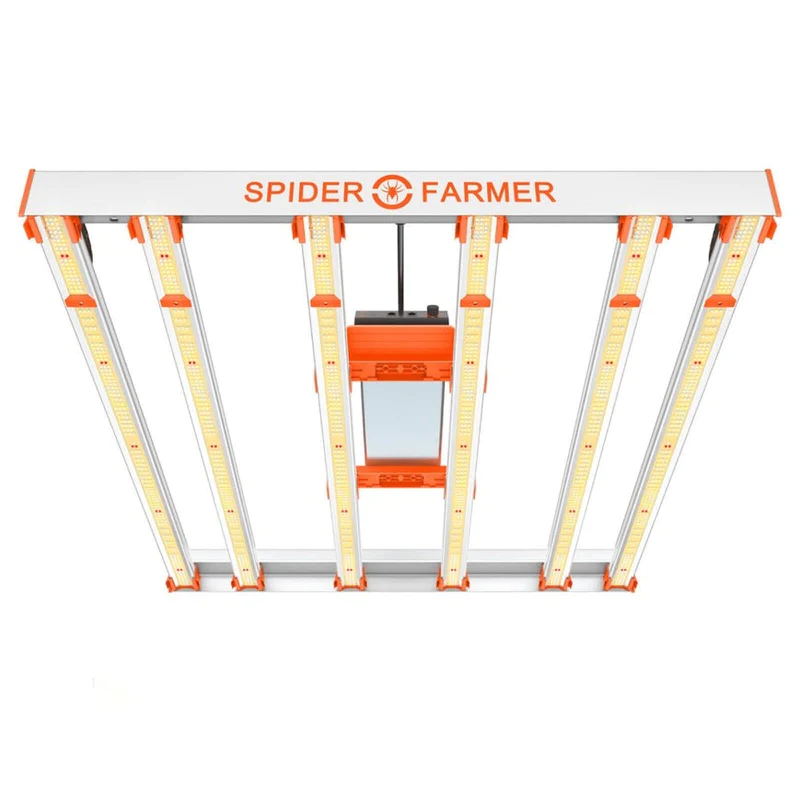
Features:
Spider Farmer led grow light has a unique elongated light bar design, which provides more even and comprehensive canopy coverage. Equipped with 1680 high-efficiency diodes, the G5000 LED grow light delivers 480 watts, achieving an impressive 2.8 umol/J PPE, covering a highly productive full-cycle grow of 4x4 feet. The G5000 Grow Light is a full-spectrum LED grow light (660–665nm, 3200–4200K, 4800–5000K) with different wavelengths of light, perfect for every stage of plant growth. The dimming button can adjust the brightness of the light, 10–100% dimming to meet the needs of plant growth.
ECO Farm SP-400 Samsung Foldable Dimmable Full Spectrum LED Grow Light
Features:
This ECO Farm LED grow light uses high-quality and durable drivers and 6 passively cooled light bars to provide full-spectrum and wide-coverage light for vegetable and flowering growth stages. This plant growth lamp has a high energy efficiency of 2.8umol/J and can produce a total PPF output of 1176 umol/J. It creates a uniform light spread in a place very close to the crop canopy, and provides for indoor planting, greenhouses and planting tents. A great effect. Compared with conventional similar wattage HPS solutions, LED lights can achieve 30–40% HVAC capacity and up to 30–60% increase in output. The ECO Farm LED plant growth light has a built-in 0–100% dimming control knob to control the dimming ability. Up to 100 lamps can be connected in a daisy chain. IP65 wet environment protection grade, waterproof and dustproof. The LED plant growth lamp adopts high-quality aluminum heat sink design to efficiently dissipate heat. It has no additional fans, and the quiet planting environment has zero noise.
Factors to Consider When Choosing LED Grow Lights
When choosing LED grow lights for your indoor garden, several factors should be considered to ensure you choose the most suitable option. Here are some key factors to keep in mind:Light intensity and coverage area
The light intensity of LED plant growth lights directly affects the growth of plants. Different plants have different light intensity requirements, so it is important to choose grow lights that can provide enough brightness for a specific plant. Also, consider the coverage area of the light. Make sure it can effectively cover the desired area of your indoor garden, providing even lighting to all plants.Spectrum control
Plants require different wavelengths of light at different growth stages. Look for LED grow lights that offer spectral control, allowing you to adjust the light’s color output. This customization enables you to deliver the ideal spectrum for each stage of plant growth, promoting healthy development and maximizing yield.Energy efficiency
LED grow lights are known for their energy efficiency compared to traditional lighting sources. Look for lights with a high energy efficiency rating, as they use less electricity while still providing plenty of light to your plants. Not only does this help reduce energy costs, it also minimizes heat output, thereby reducing the need for additional cooling equipment.Cooling
Effective heat dissipation is essential to prevent plant damage and prolong the life of your LED grow lights. Look for lights with built-in heat sinks or cooling systems that dissipate heat efficiently. This helps maintain the right temperature in your indoor garden, preventing overheating and ensuring the longevity of your grow lights.Durability and Build Quality
LED grow lights are a long-term investment, so choosing lights with solid construction and reliable components is a must. Look for lights made with high-quality materials, such as aluminum heat sinks and reliable drivers. These factors contribute to the durability and overall performance of your grow lights.Conclusion
With the advent of grow lights and other new technologies, indoor gardening is no longer a hobby but a way of life. It gives you a way to connect with nature and experiment with different plant varieties. You can even grow your own food from the comfort of your own home.
-
Mars Hydro FC 4800 480W LED Grow Light VS Spider Farmer G5000 480W Full Spectrum LED Grow Light
LED grow lights have revolutionized indoor gardening by providing energy-efficient and customizable lighting solutions. These lights utilize advanced technology to emit light of specific wavelengths that plants need for photosynthesis and growth. With their compact size and versatility, LED grow lights are suitable for a variety of indoor gardening settings.
Different wavelengths of light and their effects on plants
Light contains different wavelengths. These wavelengths determine the color and energy level of the light. For example, blue light has a shorter wavelength than red light, which means it has more energy. The shorter the wavelength, the higher the energy. The longer the wavelength, the lower the energy.Different colors of light have different effects on plant growth. For example, blue light is often used for vegetative growth, while red light is used for flowering and fruiting.
However, it’s important to note that plants use more than just one wavelength of light. Instead, they use a mix of all the different colors of light in the visible spectrum. That’s why hydroponic grow lights are designed to mimic the sunlight that plants need to grow optimally.
Photosynthetically Active Radiation While a lux meter can give you some guidance about light intensity, a lux meter can miss some important information. While lux is only related to the amount of light (lumens) humans can see, plants also absorb light beyond that range. This is called photosynthetically active radiation (PAR).
This is where the PAR table comes in handy. The PAR meter measures the amount of PAR light, which is the light used for photosynthesis. This is light in the 400 to 700 nanometer range of the visible spectrum.
Mars Hydro FC 4800 480W LED Grow Light
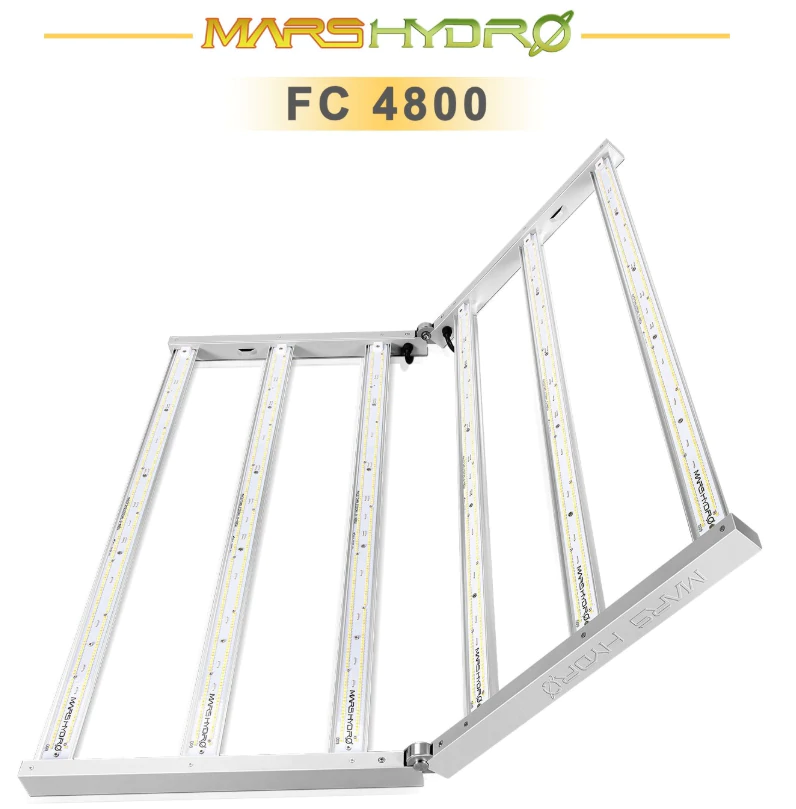
Features:
MARS HYDRO LED Grow Light features 2016 Samsung LM301B and Osram 660nm diodes with an incredible efficiency of 2.85 µmol/J Maximum yield of 2.5g per watt, 30% higher average PPFD, higher yield and quality compared to older lights 50%! High yielding full cycle growth of 3x3 feet using only 480W of perfect light. It’s perfect for commercial LED grow lights, the FC4800 dimmable grow light with daisy chain allows you to connect up to 30 Mars grow lights to your commercial grow, horizontal and vertical farming, greenhouse grow, pipe grow, Hydroponics. Great for Mars Hydro 4x4grow tents that grow throughout the cycle.
Spider Farmer G5000 480W Full Spectrum LED Grow Light

Features:
Spider Farmer led grow light has a unique elongated light bar design, which provides more even and comprehensive canopy coverage. Equipped with 1680 high-efficiency diodes, the G5000 LED grow light delivers 480 watts, achieving an impressive 2.8 umol/J PPE, covering a highly productive full-cycle grow of 4x4 feet. The G5000 Grow Light is a full-spectrum LED grow light (660–665nm, 3200–4200K, 4800–5000K) with different wavelengths of light, perfect for every stage of plant growth. The dimming button can adjust the brightness of the light, 10–100% dimming to meet the needs of plant growth.
What to Look for When Buying LED Grow Lights
When purchasing LED grow lights, it is important to keep the specific needs of your plants in mind, incl.Different plants have different light requirements, so it’s important to choose LED grow lights that provide the right amount and type of light for your particular plant.
In general, you should look for LED grow lights that emit full-spectrum light, as this will give your plants the most complete coverage. Ideally, you should have a light that allows you to change the light spectrum (e.g. UV/IR control) to suit different growth stages.
You should also make sure the light is bright enough to penetrate the leaves and reach the base of the plant.
Finally, you need to consider the quality of your grow lights. While more expensive lights may offer more features or higher-quality lights, they’re not necessarily better for you. Lamps that use cheaper generic diodes and LED drivers will perform poorly, run hotter and burn out faster. This is thermodynamics and there is no getting around it. Quality is very important when choosing LED grow lights, otherwise you run the risk of poor results.
Conclusion
The above are the recommended plant lights for 2023. If your planting environment is in a low-light environment, don’t hesitate to buy a plant light to care for your baby plants! Choose a plant growth light that suits you and create your own small garden!
-
Dulytek DMPP Pollen Press for Pre-Press Molds VS ECO Farm Rosin Press Machine- KP1
Rosin and other extracts are increasingly popular. You can find them at most pharmacies, and social media is awash with detailed pictures and videos of the yellow goo. In particular, rosin-pressing videos are popular and often inspire people to press rosin themselves.
The temperature of the printing press is very important when it comes to the quality and quantity of rosin. The optimum temperature may be different for each printing press as it depends on several factors:
Type of pressed material (flower, hash, dry sifted)
Personal preference (taste, quantity and quality)
Freshness of pressed materialWhat is Rosin?
Rosin is a solid form of resin obtained by heating plant material. It’s a relatively newcomer to the scene, but it’s already gaining popularity for its powerful effects and ease of use.It’s also more potent than other forms of marijuana. The exact THC content of rosin depends on the quality of the starting material and the method of extraction, but is usually in the range of 20–80%. This makes it one of the strongest forms of available.
Dulytek DMPP Pollen Press for Pre-Press Molds
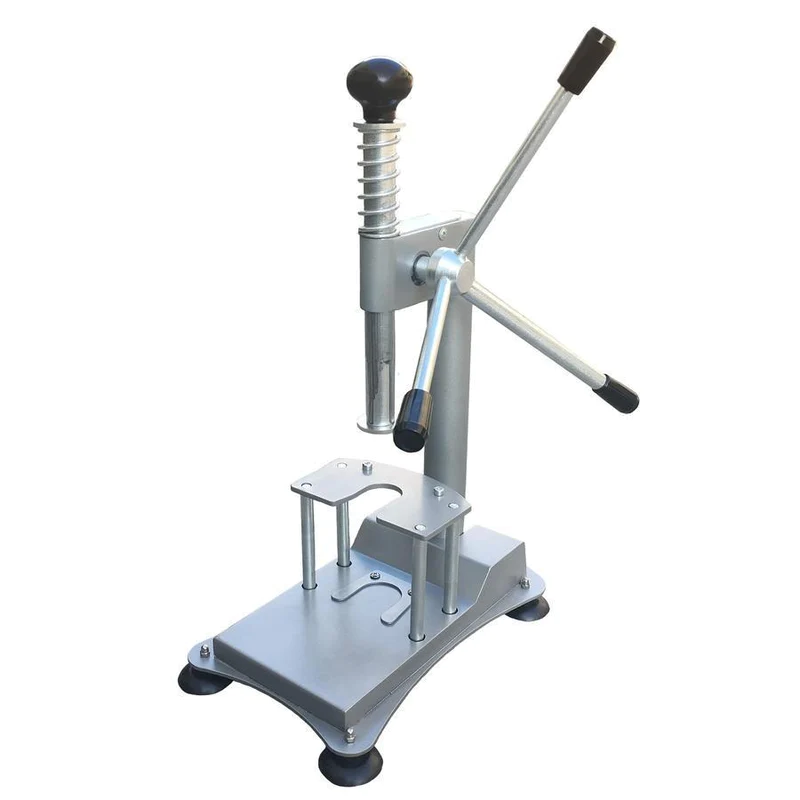
Features:
The Dulytek DMPP Pollen Press compacts your herbs with ease using rectangular or cylindrical molds. This press comes with a removable frame that will fit basically any mold or object from 1" to 10.5". With or without a frame, this press works with nearly all pre-presses of all sizes, including the popular cubic and cylindrical pre-presses and brick presses.
ECO Farm Rosin Press Machine- KP1
Features:
This ECO Farm rosin press uses double-layer heat-insulated solid aluminium plates. The front of the press is equipped with a temperature control device and a handle. It has a very user-friendly design and is more convenient to use. It adopts an intelligent temperature controller design, with an LCD display and timer button. The maximum temperature can be increased to 220 degrees Fahrenheit. The upper and lower heating plates can evenly heat the object. The maximum pressure of the rosin press can reach 4 tons, which is easy to adjust and can be pressed quickly. The ergonomic design makes it easy to press and move; you can even put it in your backpack while travelling.
How to Use a Rosin Press
Using a rosin press to make your own concentrates is a simple process, but it requires attention to detail to get the best results. Here are the basic steps to follow:Step 1: Prepare Your Material
The first step is to prepare your material. Make sure it is dry and free of any contaminants. You can use flower, kief, or hash. If you’re using flower, grind it up to increase its surface area and make it easier to press.
Step 2: Preheat Your Press
Preheat your press to the desired temperature. The ideal temperature will depend on the material you’re using, but generally, temperatures between 180°F and 220°F work well. Use a thermometer to ensure that the temperature is accurate.
Step 3: Load Your Material
Load your material into a rosin bag. The size of the bag will depend on the amount of material you’re pressing. A 2×4 inch bag is a good size for small batches. Make sure the bag is folded over and the material is evenly distributed inside.
Step 4: Press Your Material
Place the bag with the material into the press between two pieces of parchment paper. Apply pressure to the press until the rosin begins to flow out of the bag. You may need to adjust the pressure or temperature to get the desired results.
Step 5: Collect Your Rosin
Once you’ve pressed your material, use a rosin stamp or scraper to collect the rosin from the parchment paper. Be careful not to touch the rosin with your fingers, as this can affect its flavor and consistency. Store your rosin in a cool, dry place in an airtight container.
By following these simple steps, you can use a rosin press to make high-quality concentrates at home. Experiment with different materials, temperatures, and pressures to find the perfect combination for your needs.
Conclusion
We hope this guide has been helpful to you, not only in understanding how rosin is made, but also in making the right decision when choosing a printing press.
-
ECO Farm ECO-GX Series LED Grow Light Bar VS PHOTOBIO T 330W LED Grow Light With S4 Spectrum
Your houseplants grow in a grow tent or greenhouse. Indoors, plants lack natural light. To solve the lighting problem, plant growth lights are needed as a supplement. This blog brings you some inspiration for choosing and using grow lights.
Features and Benefits of Using LED Grow Lights
Uses less energy than regular lights
You can lower your electricity bills by using grow lights. Grow lights will help you save on your electricity bills as they use 17% less energy than other types of lighting.Plant cultivation in any climate
Plants can be grown year-round under indoor grow lights. Regardless of the weather outside, you can use grow lights to grow plants indoors all year round.Manage light intensity
You can adjust the light and dark exposure of the plants. This is critical because the plants need a certain level of darkness to develop. Grow lights allow you to choose how much light and darkness your plants receive.ECO Farm ECO-GX Series LED Grow Light Bar
Features:
This ECO Farm LED grow light uses OSRAM chips to provide the highest PAR/LUMEN output with the actual power of 330W. This LED grow light is very suitable for plant growth and flowering, making your growing life easy and convenient; and with a noiseless and fanless LED strip design, it is also a good choice for indoor growing side lighting for plants. This grow light also features a waterproof and dimmable Mean Well driver with auto-sensing power for 120VAC and 240VAC and 277VAC for large rooms and commercial setups. This grow light is covered with glue to protect the water from light, no need to worry about the high humidity greenhouse growing environment, and has a 50% longer lifespan compared to other brands of lights.
PHOTOBIO T 330W LED Grow Light With S4 Spectrum
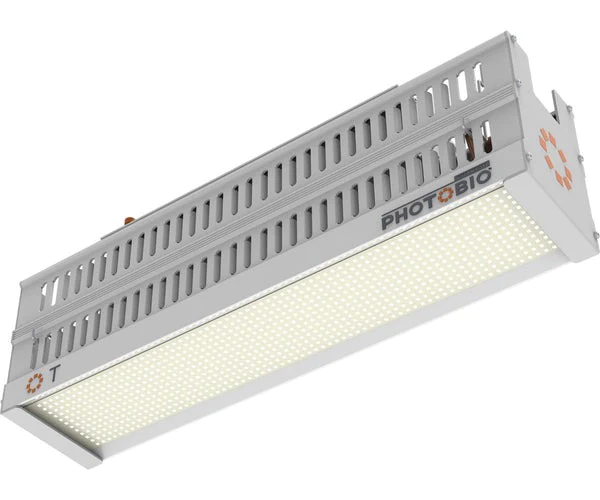
Features:
PHOTOBIO LED grow lights are designed for greenhouse and indoor applications. The slender design minimizes sunlight disturbance while providing more access to the plant canopy. The ultra-efficient commercial design utilizes a closed-loop heat pipe cooling system to quickly remove heat from the diodes, providing excellent heat dissipation and long life. The efficient S4 spectrum provides ideal human and plant health conditions for better working conditions and consistent crop quality.
Buyer’s Guide
There are several aspects that should be considered before purchasing any grow lights. This buyer’s guide will help you choose the best product for your needs. Please tell us some important aspects of lighting.1. Lighting
When choosing a lamp, the intensity of the lamp is an important consideration. The strength must be suitable for the period of development of the plants and the size of the room. The intensity depends on the number of photons needed for plant growth and other plant functions. PPF and PAR charts should be consulted when selecting lamps.2. Spectrum waves
Proper light spectrum is essential for the growth and developmental stages of plants. There are two kinds of spectrum: concentrated and broad. White light broad-spectrum lighting is often favored for its efficiency and beneficial effects on plants. The spectrum of light that is right for you should be determined by the stage of plant growth.3. Energy consumption
Power, or wattage, is critical in determining the ability of light to support plant development. People want to maximize the use of light while consuming the least amount of power. If you need to consume energy, you should give preference to lamps with lower power. But if you want maximum light and can afford it, put more emphasis on the other variables.4. Lighting area
Since grow spaces and sizes vary, area measurement is critical. Lights that illuminate the entire growing area are usually chosen. In addition, the dispersion of light is crucial to cover a specific area. Some configurations utilize lenses to focus energy in one location, while others do not, resulting in more diffused light.5. Warranty
These lights are usually not faulty, but sometimes a diode or fan in the system can fail. Manufacturers’ coverage of such issues is critical to consumer trust. High-quality lights come with a one- to seven-year warranty. Three- and five-year warranties are the most popular. Often, they will provide a replacement or fix the problem for free.Conclusion
When it comes to finding the best LED grow lights for your grow tent, there is no “one size fits all” answer. Every grower has different needs and budgets to consider when choosing an LED lighting system. With so many options on the market, it can be overwhelming to decide which one is right for you! Hope this article helps you.



